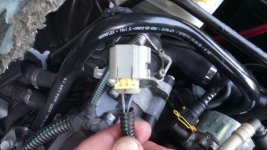Sweetsixteen
Established member
- Joined
- Jul 7, 2014
- Messages
- 1,109
- Points
- 205
The Panda 169 has a two part front grille.
The top part lets in air that feeds the inlet manifold, via the air cleaner. This shouldn't be covered.
The lower part, under the bumper, feeds air to the radiator and engine bay. I have blanked off this lower part by fitting a piece of rigid plastic (bit cut from old estate agents sale board!). It isn't noticeable, because I have painted it matt black with blackboard paint.
This does not stop all air getting to the radiator. It stops a good amount, and it also stops cold air rushing straight through and around the engine and ancilliaries. The car warms up quicker, but never overheats.
UK cars are always overcooled, because Manufacturers build cars for the hottest climates and tough conditions. I used to export UK cars and sell them to places where temperatures reached over 40 degrees, and some had the grilles blanked as above. The engine cooling systems never gave trouble.
As far as the egr always staying partly open, this does not apply to every vehicle. Most egr systems now will default to the closed position, unless they are gummed up with gunk.
The top part lets in air that feeds the inlet manifold, via the air cleaner. This shouldn't be covered.
The lower part, under the bumper, feeds air to the radiator and engine bay. I have blanked off this lower part by fitting a piece of rigid plastic (bit cut from old estate agents sale board!). It isn't noticeable, because I have painted it matt black with blackboard paint.
This does not stop all air getting to the radiator. It stops a good amount, and it also stops cold air rushing straight through and around the engine and ancilliaries. The car warms up quicker, but never overheats.
UK cars are always overcooled, because Manufacturers build cars for the hottest climates and tough conditions. I used to export UK cars and sell them to places where temperatures reached over 40 degrees, and some had the grilles blanked as above. The engine cooling systems never gave trouble.
As far as the egr always staying partly open, this does not apply to every vehicle. Most egr systems now will default to the closed position, unless they are gummed up with gunk.
Last edited:



